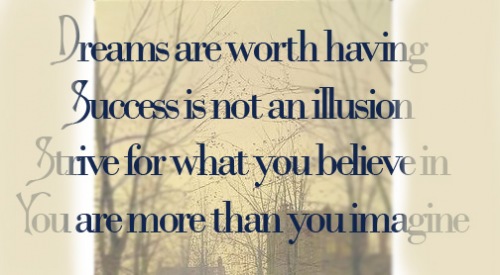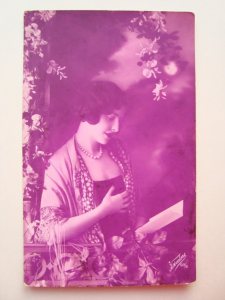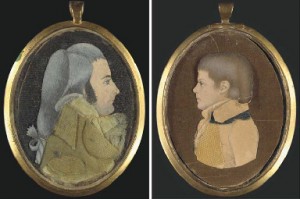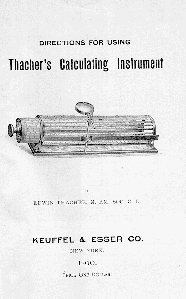
Copyright 2011 An American Florilegium
I have not posted an interview in awhile and am so excited about this one, with museum professional Cheryl Lynn May. It is inspirational in so many ways, including how I know Cheryl and how we re-connected.
Cheryl was my main babysitter when my three kids were very young. She was mature beyond her years, always there for me, and my kids loved her. In 1995, we moved four hours away from the town where Cheryl lived, and we eventually lost touch. A couple of years ago, when people of all ages were discovering Facebook, Cheryl found me and my kids.
Since then, I have watched her go through a challenging Masters program in American Material Culture Studies, and take on her first post-graduate job with Garth Auctions in Delaware, Ohio. Her interesting and whimsical blog, An American Florilegium, combines her personal and professional interests,.
It made me wonder how Cheryl discovered her passion for objects and history, and as you will see, her story is a perfect example of following inspiration. Enjoy!
———–

imaginedplace
Q: Tell us a little about your background. How did you become interested in art history and museums and how did you decide which path to take?
CLM: I think I was always destined to study art history and material culture but simply had no name for it until I started college. As a child I found comfort in old objects, things with history. There was always something reassuring in having something in your hands that had “seen” so much life and had survived for so long. Objects with history and materials wrought with someone’s hands and creativity have such beauty and I was forever in awe of that.
Because my family was seriously low-income, I was not able to follow the usual course of going to college directly after high school. And since no one in my family had ever gone to college, I was lost. I struggled for years to find myself and make ends meet. Every door seemed locked no matter how hard I tried to push through. I applied for job after menial job only to be rejected each time. I was forced to figure out some other way to make it in the world and so I turned to objects.
In attempt to find myself and seize my independence, I began frequenting garage sales, estate sales, antique stores, and flea markets. Having little money meant that there was not much I could afford but I scoured, finding objects otherwise overlooked by more serious collectors and dealers and transformed them into something desirable.
I purchased ephemera – the scraps of papers, photographs, advertising, and calling cards intended to be short-lived but were instead saved for posterity. I snagged anything that I could afford that was aesthetically interesting or inherently curious or beautiful, objects like a Chicago World’s Fair child’s mug, rolls of antique block printed wallpaper – fragments of lives lived.
With these materials, I began a business on eBay selling what I found. I took the time to research everything, to design eye catching listings, and to write poetic descriptions that transformed something as simple as a circa 1890s cabinet card of a woman into a stunning documentation of period clothing and accessories.
It worked.
Not only did my “bottom feeding” at sales provide me with an income to survive; it also was the first step in discovering what I was meant to do and, ultimately, who I was meant to be.
Studying the past through objects, understanding the lives lived around the materials, and the people who made them somehow helped me learn more about myself.
When I finally found the courage to step through the doors of my local community college, it seemed logical (and comforting) to enroll in a museum studies course as one of my first college classes. The notion of being in college was terrifying to me – I had no preparation for what it would be like and I honestly had no faith that I would make it. Somehow, a museum studies course felt within reach, like something I could accomplish and so I tried. And I was hooked.
Semester after semester I grew more confident in my studies and became more closely attuned to what I wanted to do with my life. In my second semester I enrolled in an art history course and from the moment the PowerPoint presentation loaded, I knew art history was what I would focus on. It brought together my passions for studying creative productions and expressions, for research, and scholarly writing. It was a perfect fit.
Fast forward through graduating from community college and transferring to a four-year college. In the meantime I completed a museum studies program offered by my community college, completed an internship at a local historical society, and took a wide variety of art history classes.
In my final year of college, I wrote my thesis on a portrait miniaturist named Mary Way (1769-1833) who created a very distinctive type of miniature. The so-called “dressed” miniature seems to have been her own innovation of a century’s old form of artistic production – collage art. Rather than simply drawing out the visage of her sitters, Way cut bits of fabric to form a gentleman’s waistcoat, a woman’s bustle and lace cuff. She applied them to the miniature’s surface, thereby creating a representation of the sitter in three dimensions; ground breaking for late eighteenth century art.
Way’s work was unique in many ways and hard to categorize. Studying her work made me begin considering the larger framework of art and what it is – how we define it, what classifies as “art” and what does not. Thus began my interest in studying material culture, the history of things.
Following my graduation with my bachelor’s degree in art history, I was accepted into the highly competitive Winterthur Program in American Material Culture at the University of Delaware in 2008 and during my two years there I studied object history and museums. I completed various internships and studied a wide range of objects including textiles, ephemera, ceramics, furniture, etc. dating from the late seventeenth century to the nineteenth century.
After earning my master’s degree from the Winterthur Program last year, I worked as a research intern at the Hagley Museum and in October, I began working for Garth’s Auctions, Inc. in Delaware, Ohio.
In many ways, my work at Garth’s Auctions brings my life pre- and post-college full circle. I began with a passion for history and antiques and sold them to satisfy my financial needs and my personal curiosity. Throughout my six years in school I rigorously examined art and objects through a scholarly lens to understand their makers, their history, and their impact. Today, I am able to bring together my experience in the sale of antiques with my academic training – researching and analyzing objects both for their historical significance and their desirability in the current marketplace.
See? Destiny.
Q: What are you doing now (job-wise) and what is it teaching you?
CLM: Although I’ve only been at my current job for six months, I’ve already learned so much. I am constantly amazed by the sheer quantity and variety of objects that pass through our doors. Everything from mass produced ceramics to a carefully wrought blanket chest – there’s always something new; a new form, new object. It affirms that human ingenuity and creativity is vast and powerful. It is surely breathtaking.
Q: Your blog, An American Florilegium, seems to reveal a more personal side of you, as you say it is a creative outlet, a “curated cabinet of curiosities.” Tell us about how this idea came about and how it relates to your work (or not).
CLM: My blog, An American Florilegium, was conceived last summer, post-graduation, when I felt the strong desire to reacquaint myself with my creative side. I had spent so much time with my nose in the books, so much time working in a very academic mind set, that I felt disconnected from the person I felt I used to be – the one who wrote poetry, made things with her hands, took photographs, baked and gardened, and appreciated the aesthetic beauty of things in a more “frivolous” way – independent of scholarly studies. And so, my blog is essentially like a confluence of two very powerful rivers – with one being focused on intrinsic aesthetic beauty and the other being focused on history and the academic study of the past.
Q: I love that you say your aspirations are “as big as a robin’s egg blue sky.” Where do you see yourself ten years from now?
CLM: That is never an easy question! Ten years ago I never could have foreseen where I am now. But surely, I do have so many aspirations. I would love to have a series of articles published on my master’s thesis work on Mary Way in addition to some other research topics on object history that I have hanging around. I’d also love to curate an exhibition of the artist’s work. Most importantly, I hope to still be working with objects – researching them, studying them, and in many ways, saving them. People cherish objects – regardless of how anti-materialism one may be, there is always some thing that triggers a fond memory, something that is held on to for sentimental reasons, cherished for its connection to loved ones, the past, etc. I constantly encounter things with little handwritten tags, “Received from…”, “Belonged to my mother…”, etc. – objects that were once cherished. In my work, I feel like a caretaker of things and memories, and it fills me with great satisfaction to see these things passed on to others who will care for them and attach their own memories to them.
Q: Do you have any advice for a young person about following inspiration?
CLM: Follow it! Ask yourself, what is it that I choose to do for myself when I have free time? What is the thing that I can talk about for hours without tiring of? What is the thing that most excites me – the thing I would choose to learn about/do/create/study if it was a “perfect” world? And whatever that thing is – DO IT. I implore you, do it.
Before I knew anything about writing a Chicago style paper or MLA formatting or “material culture” or even art history for that matter, I always said I’d study at Antiques Roadshow University if such a thing ever existed. Looking back, I see that I essentially created it for myself. Though my path was by no means straightforward or easy, the key was clinging to the passion and interest that was most fundamental to me. With that passion, that energy – all the doors that once seemed lock finally, finally just swung open and beckoned me to pass through.
The greatest gift a person can ever give themselves is the permission to love what they love, to follow their dream.
———————–
An American Florilegium is a blog conceived as a creative outlet by Cheryl Lynn May, an emerging museum professional with a master’s degree in American Material Culture Studies from the University of Delaware’s Winterthur Program, an undergraduate degree in art history, a love of objects and history, and aspirations as big as a robin’s egg blue sky.
It is her hope that this curated cabinet of curiosities will inspire and enchant, or at the very least, entertain for a few brief moments.
email: american.florilegium@gmail.com


Wow, I think there should be quite some applause at the end of this. Fantastic journey and an illustration of determination. Thanks so much for sharing your story, Cheryl, and thanks also to Kim for hosting it.
One thing that I did pick up on is that you are a great writer, Cheryl. Your words flow beautifully and you grabbed my attention and wrested it to the page (not an easy task, trust me). So yeah, those thoughts on writing, I’d say go for it. You’ve got the skill.
And you set me thinking about my own journey. Thanks and I hope yours continues in the same upward direction.
Best wishes,
Liz
(off the edge, but learning to fly)
I love the entrepreneurial spirit at work here!
“I always said I’d study at Antiques Roadshow University if such a thing ever existed. Looking back, I see that I essentially created it for myself.”
“Not only did my “bottom feeding” at sales provide me with an income to survive; it also was the first step in discovering what I was meant to do and, ultimately, who I was meant to be.
Studying the past through objects, understanding the lives lived around the materials, and the people who made them somehow helped me learn more about myself.”